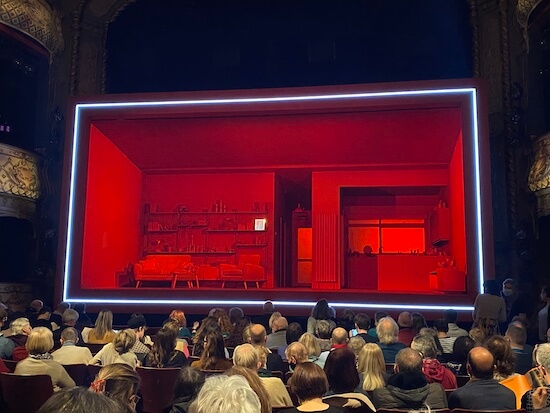
Last week I took an afternoon off and went to see a preview performance of “A Number”, a powerful and intense “two-hander” that ran for only a little over an hour.
I love the Theatre, just as I love Ballet, Opera, Movies, as well as a good TV drama. I love books, I love to get lost in a book. I love audiobooks, particularly when out on a long winter’s walk where I have consciously chosen to both walk and “read” a book. I love winter walks without any media even more, when the world around me is my “media”.
Today’s thoughts are inspired by this concise daily blog from Seth:
In defense of non-interactive media
It doesn’t talk back. It doesn’t beep or update or invite a click. It doesn’t change based on who’s consuming it. It doesn’t interrupt you, and it begs to not be interrupted.It’s rarer than ever before, and sometimes, we need it.
from Seth Godin’s daily blog
I love this thought he shares, yet I disagree that “non-interactive media” is rarer than ever before. It is all around us, and for this, I think about walking in nature without any music or audiobooks (and yes, with our phones off and stashed deep in our coats!).
Nature indeed does not change based on who is consuming it. It doesn’t interrupt you and you cannot interrupt it by walking through and with it.
It is, however interactive, in that every person who walks in nature has the opportunity to choose their own experience of and with it, of how present they choose to be to each moment, each view, the feel of the wind on their face, the changing light, perhaps the rain starting to fall or a puddle or mud on the pathway and how we have to focus to stay balanced as we walk along.
Whether a walk in nature, reading a book, watching a movie or any other of the wide variety of non-interactive media that are out there, I sense that increasing rarity is less the issue than our unwillingness to choose to interact with non-interactive media as opposed to the pavlovian sugar drip of the interactive.
Now, some closing thoughts on non-interactivity and expectation management with our work communications:
- First, I treat emails as “non-interactive”. More specifically, I treat them as asynchronous. If people who work with me regularly actually need a rapid response from me, they know not to use email, as it is not a “now!” form of communication and was never designed to be thus. It was electronic mail, and with mail we receive a letter then take our time to read, consider then respond. Of course, if you need me urgently, there are ways I can be reached by other media that are more, well, interactive and synchronous!
- Second, I do not reply to emails or messages outside core working hours. The 24/7 “always on” mode of work communications is a relatively recent one (after all, we have only widely used email in business for ~25 years, a blip in time in terms of organised work). Always being connected to work prioritise the urgent over the important, plus it means we then find it difficult to disconnect, to take time to focus on the “important, but not urgent”.
- Third, I was recently working with a client on an “important, but not urgent” piece of work that had become urgent as they had run up against a deadline for delivering it and had not looked at it before time as they had, simply, found it difficult to get into the headspace to do so. We then had a call to talk about it, then they said that what they would do next would be to let it sit in their mind overnight, go for a long walk in the morning, then return to it after the walk. Many benefits to “non-interactive media”, including the ability to disengage our fixation for constant interactivity and engage the deeper parts of how our mind processes.
